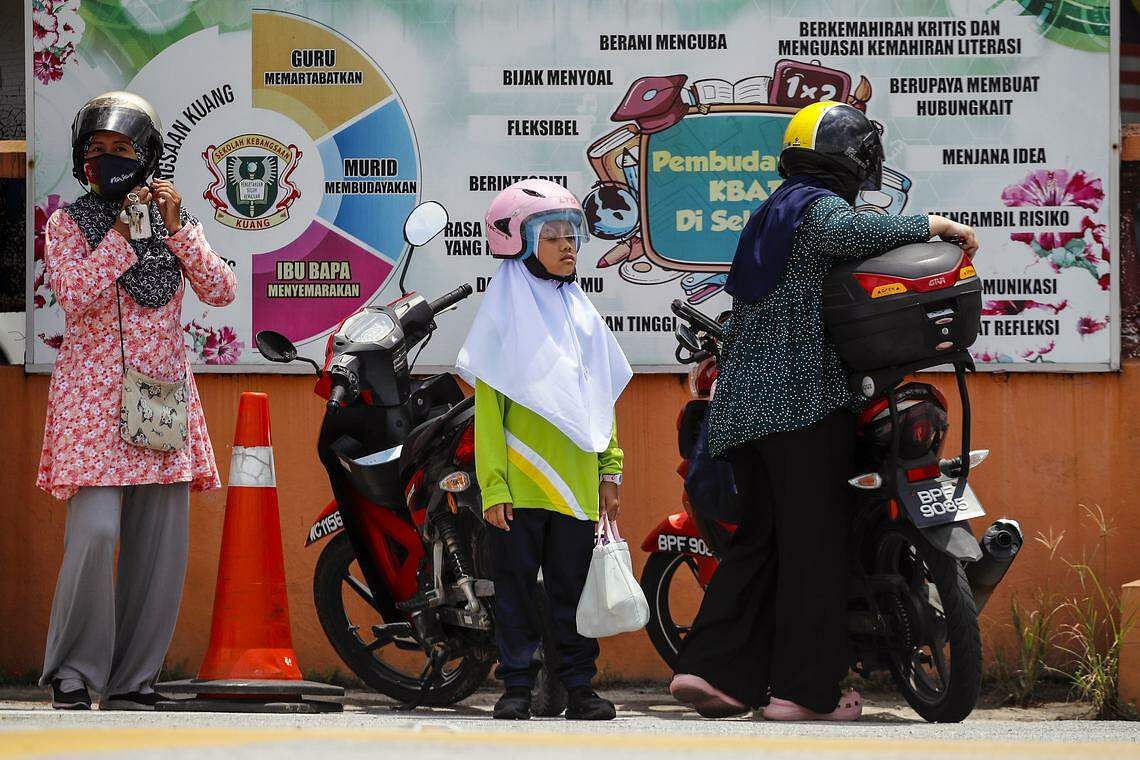Malaysia’s heatwave expected to last until June, with haze likely to follow
Malaysia’s current heatwave is expected to last until June, with high temperatures felt throughout the country, said the national meteorological department.
It is forecast to be followed by slightly below-average rainfall until September.
Haze is also likely to return from June to September as a result of the drier conditions and hot weather, said Natural Resources, Environment and Climate Change Minister Nik Nazmi Nik Ahmad.
“The risk of local haze or transboundary haze returning is higher due to uncontrolled fire in the forest or peatland as weather conditions become warmer during the period,” he told The Straits Times.
In Malaysia, a heatwave alert is issued when the average daily maximum temperature exceeds 37 deg C for three consecutive days.
In April, the Malaysian Meteorological Department issued heatwave alerts in several states, with the highest temperature recorded at 38.4 deg C in Malaysia’s central Negeri Sembilan state on April 22.
Due to the heatwave, the Education Ministry on Wednesday ordered all outdoor activities in schools nationwide to be temporarily suspended.
On April 25, an 11-year-old boy died of heatstroke and severe dehydration in the east coast state of Kelantan. The same day, a 19-month-old toddler died of severe dehydration, also in Kelantan.
Dr Daleleer Kaur Randawar, a mother of two school-going children, said children are particularly vulnerable when they are exposed to high temperatures, and necessary measures must be taken by the ministry to ensure the safety of children.
“If required, it would be good to revert back to blended learning or online classes during this heatwave,” said the 48-year-old associate professor at Universiti Teknologi Mara.
Ms B.R. Dhillon, 37, who works as a chef, said: “This is the first time that I felt that Kuala Lumpur was scorching hot after coming back from Manchester. It feels like a sauna.”
Meteorological Department deputy director-general Mohd Hisham Anip said the heatwave is likely to end by June as the high temperatures will gradually drop by then.
“The temperature will still be hotter than normal between June and September. But it will not be as hot as in April and May, which are the hottest months of Malaysia historically,” he said.
He added that the mercury is expected to hover between 32 deg C and 35 deg C during this period, higher than the usual temperatures of between 32 deg C and 33 deg C.
He said Malaysia’s monthly rainfall is expected to reduce by 20 per cent to 40 per cent during the June-to-September period in some parts of the country, compared with the average rainfall in other months.

Amid the heatwave, the quality of air has also been a concern.
The Air Pollutant Index (API) readings in several states, including Johor, Penang, Kedah, Selangor, Negeri Sembilan, Kelantan and Terengganu, rose above 150 on April 16. An API of between 101 and 200 indicates unhealthy air quality.
The Penang mainland, which reported a smoky odour in the air, showed an API reading of between 126 and 148 on April 17.
Meanwhile, peat fires on the eastern coast of Kelantan in April had worried residents, as they experienced respiratory problems after the fires started. Health experts in Malaysia said the number of people seeking medical attention for respiratory issues – sudden asthma attacks, wheezing, breathlessness and allergic rhinitis – had risen.
To mitigate the haze, the Ministry of Natural Resources, Environment and Climate Change is working with various departments, including the Department of Environment (DOE), the Malaysian Fire and Rescue Department (JBPM) and Malaysia’s national disaster management agency, to increase surveillance by activating ground and air monitoring patrols in peatland areas and landfills that often catch fire, added Mr Nik Nazmi.
JBPM said on Thursday that it had identified a total of 406 hot spots across the country via satellite.
Its director of fire and rescue operations Ahmad Irzam Osman said monitoring via patrols or aerial surveys with the use of helicopters and drones was being carried out in collaboration with the Forestry Department and the DOE to ensure the situation remains under control.
Get The New Paper on your phone with the free TNP app. Download from the Apple App Store or Google Play Store now



